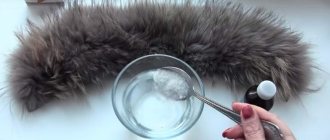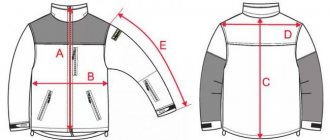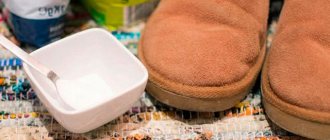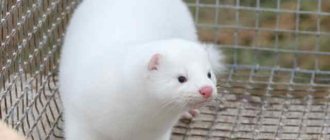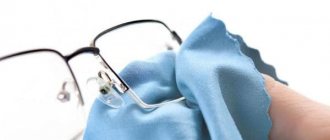Taboo when cleaning fur
- Fur cannot be washed! If the fur (the skin that holds the fur) gets wet, it can become rough and cracked. In this case, the product becomes deformed and becomes bald.
- Fur should not be dried with a hairdryer, on a radiator or in direct sunlight! Only possible outdoors or in a well-ventilated area.
- Fur should not be ironed! Even from the inside out.
- Fur cannot be cleaned with household chemicals to remove rust, washing powders with enzymes, or bleaches.
Before using any other product, test it on a small, inconspicuous area of the product. For example, under the arms.
How to get rid of dust
Even in a well-closed case, a fur coat or vest can become dusty. Therefore, before storing a fur item for storage, and also before wearing it, freshen it.
Spread a damp white cotton sheet on the floor. Place the fur coat on top and beat it thoroughly, first on one side and then on the other. After that, hang it on a hanger and comb it.
If the fur is tangled and matted, spray the item with warm water from a spray bottle and let it dry. Then comb. The pile will fall into place. For the same purpose, you can carefully walk over the fur with a steamer.
Useful tips
If you properly care for natural fur coats and collars, you will have to clean them infrequently:
- Fur products are afraid of getting wet. It is recommended to wear natural hats, fur coats and collars in cold but dry weather, and not in snow and rain.
- If the pile does get wet, then it should be dried immediately in warm conditions, straightened out.
- Natural fur has a very delicate structure. Even if it needs to be cleaned, this should be done with light movements; you should not aggressively rub the pile with sponges and brushes.
- Fur clothing turns yellow and loses its shine from close contact with other things. Fur coats and hats should be stored in a spacious closet, making sure that they do not come into contact with adjacent clothing.
In spring and summer, fur coats and hats need to be taken out of the closet from time to time and ventilated, this will avoid the occurrence of an unpleasant odor.
For better preservation, fur clothing should be regularly ventilated and cleaned using dry methods.
Advice! At the end of the season, it is useful to treat fur items with specialized preventative agents - this will protect them from dust and moths during storage.
How to restore shine to fur
To make your fur coat or collar sparkle again in the sun, treat it with a solution of lemon juice or table vinegar (not essence!).
Dilute lemon juice or table vinegar in water in a ratio of 1: 1. Using a sponge or soft natural cloth, treat the fur. It is important that the sponge or rag is wrung out well. The pile should not be wetted, but rather wiped.
When the product dries, comb it. The effectiveness of this product is especially noticeable on mink.
Another way to restore shine to fur is to use walnuts. Grind the kernels, wrap them in gauze and rub the fur. The released nut oil will refresh the appearance of the product.
In most cases, the measures described - knocking it out and returning the shine - are enough to make a fur coat, hat or vest look like new. But more serious problems can arise with natural fur. It may turn yellow, become greasy, or become stained.
Rules for cleaning and storing products
When cleaning mink fur, there is a high risk of being careless or not taking into account the characteristics of the substances used. Actions that are undesirable when caring for an expensive product:
- Washing coats is strictly prohibited. Under the influence of detergents and water, it will lose its shape, the skin will become rough and dry.
- Do not use a hair dryer when cleaning wet.
- Under no circumstances should an iron be used during the drying process. The product will retain its natural shape if you use regular hangers.
- You should clean your mink coat only when necessary. Too frequent procedures may cause fur shedding.
To avoid the problem of how and how to clean a mink coat at home before each winter season, you need to follow several rules. They are quite simple:
- You cannot store a fur coat in a plastic bag so that the pile does not become electrified and oxygen deficiency does not form;
- Before long-term storage of products, it is recommended to treat cabinets with special products that will protect the fur coat from pests;
- you can stuff your sleeves with newsprint: moths don’t like the smell of printing ink;
- Before storing a mink coat, you need to ventilate the room and put a bag of incense in the closet;
- Mink fur should not be sprayed with perfume to avoid stubborn stains;
- you should give up the habit of carrying a bag on your shoulder or on your arm: this is a sure way to dry out the fur.
For today, that’s all I wanted to say about how to clean a mink coat at home. And if you follow simple rules and provide the fur coat with proper care, then this expensive and beautiful thing will last a long time. It is advisable to monitor the condition of the mink coat in the summer.
How to get rid of yellowness
Over time, light fur, as well as fur with white hair at the tips (silver fox, chinchilla and others) acquires a yellow tint. The product immediately loses its presentability.
There are several ways to clean fur from yellowness.
- Dissolve 1 tablespoon of table salt and ½ tablespoon of ammonia in a glass of warm water. Apply the solution using a well-wrung out soft cloth. Dry and comb.
- Dissolve 1 tablespoon of hydrogen peroxide in a glass of warm water. Apply the solution to the product, let dry, and comb.
- Dissolve 1 tablespoon of pet shampoo in a glass of warm water. Beat the foam and apply it to the pile using a sponge. After 5 minutes, remove the foam with a sponge or cloth soaked in clean water. Dry and comb.
Products with short pile can be wiped both with and against the wool. On long fur, cleaning agents are applied according to its growth, after which the pile can be ruffled.
When removing greasy deposits and stains, the color of natural fur is also important.
Silver fox
Compound:
Gasoline Baby powder
How to clean:
Mix fuel with baby powder. Mix the mixture until smooth. Apply the product using a flat brush. After the product has dried, shake the product. Brush out any remaining solution.
How to clean white fur
niknikpo/Depositphotos.com
Starch, talc and semolina help fight grease and greasy stains on white fur. They absorb dirt and unpleasant odors.
Take starch (semolina or talcum powder) and pour it onto the contaminated area. Using a soft brush, distribute the substance between the fibers or gently rub the fur with your hands, as if you were washing. Shake the product well to remove any residue.
The dirtier the fur, the darker the starch, talc or semolina will be. The procedure must be repeated several times until the substance stops getting dirty.
It’s even more effective if you heat starch, talc or cereal before cleaning. This can be done in a dry frying pan or in the microwave.
It is important to remove all remnants of the product, otherwise it will become food for moths. Therefore, the product can not only be shaken well, but also vacuumed with a low-power vacuum cleaner. For example, the kind that is used to clean the keyboard.
Mink
The guaranteed service life of mink fur coats, vests, and hats with regular and high-quality care is more than ten years.
If water gets on the surface of the product, you need to remove the moisture by shaking the item. Do not dry wet fur with an iron.
Option 1:
Pour 200 ml of water into the container. Add silk washing powder to the water. Foam the solution by stirring. Apply the composition to clothing, lightly rubbing the pile. Dry the fur with clean, dry gauze.
Option 2:
Apply baby powder to fur. Distribute the mixture with your hands over the entire surface of the fur. Shake the product with a sharp movement.
Option 3:
Make a solution: add a teaspoon of baby soap and 80 g of pork fat to a liter of boiling water. Mix the solution until smooth. Add twelve drops of ammonia to the mixture. Cool the solution. Using a flat, wide brush, apply the preparation to the fur, without overly moistening the inside. Dry the product naturally.
How to remove stains from fur
Stains on fur clothing can have different natures and origins. For example, natural suede bags readily give off the color of fur when worn on the shoulder. You can get dirty with sauce when you eat on the run, or make a blot with a stationery pen.
You can remove stains from dark fur using gasoline (white fur will turn yellow). Refined gasoline with a high octane number. Sometimes it is applied in its pure form, but more often it is mixed with starch or washing powder without enzymes to the consistency of sour cream. A couple of minutes after application, the mixture should be removed with a sponge soaked in clean water, and the product should be dried and combed.
Stains from light fur can be removed using acetone or alcohol, also by mixing liquids with starch or baking soda.
The stronger the dye and the older the stain, the more difficult it is to deal with it at home. If the above methods do not work, do not experiment: take the fur coat to the dry cleaner.
Nuances of fur coat care
- If you expect to wear a fur coat frequently in public places (transport, supermarkets, buses), it is recommended to test the “cleanliness” of the pile every day after wearing outerwear: switch the temperature setting to “cold” on the hairdryer; blow a stream of air over the hem and cuffs of the fur coat for five seconds. The fur needs to be cleaned if, after blowing, the hairs of the pile cannot return to their original position.
- It is prohibited to use an iron to iron fur or lining. The pile of a natural fur coat quickly deforms.
- It is not recommended to comb the fur frequently. Metal teeth cause microdamage to the flesh, which affects the strength of seams, gluing points, and fur hairs. Frequent scratching leads to the appearance of “bald patches.” Fur should be combed as needed with a special comb designed for caring for fur products.
- To avoid lint loss, do not comb wet fur.
- If a button comes off on a fur coat: cut out a square from artificial or natural leather (suede) slightly smaller than the diameter of the button; use a leather layer between the pile and the button; sew on the fittings using cotton thread (No. 60).


